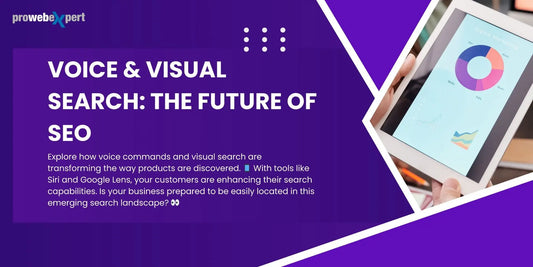
Why Your Website Needs a Strategy, Not Just a Pretty Design
Share
In the rapidly evolving digital landscape of today, a website serves as the primary entry point for your business. It frequently represents the initial engagement a prospective customer has with your brand. Although appealing visuals and contemporary design can capture interest, they are insufficient on their own to generate conversions or foster significant relationships. Your website requires a more profound element: a well-defined, data-informed strategy.
Organizations frequently succumb to the pitfall of emphasizing appearance at the expense of practicality. They invest in complex designs with animations, video headers, and fancy fonts, but overlook a crucial question: What is the website's purpose? Although a visually appealing website may receive praise, if it does not aid in the growth of your business, it is not serving its intended purpose.
1. Looks Aren’t Everything: Strategy Drives Purpose
A well-designed website can create a strong first impression, but without a strategy, it lacks direction. A strategy explains the reasoning behind every element on your site.
-
Why is the call-to-action placed above the fold?
-
Why are testimonials located near the pricing section?
-
Why does the homepage emphasize a particular product or service?
A thoughtfully crafted website is not only visually attractive but also easy to navigate. It leads users through a series of steps towards your intended goal: be it completing a purchase, scheduling a service, or submitting a contact form.
2. Your Website Is a Sales Tool—Not Just a Digital Poster
A website that emphasizes strategy understands the customer journey. It answers questions, reduces doubts, and builds trust. By incorporating strategy into your web development process, your site evolves into a 24/7 sales powerhouse.
-
Capturing attention with relevant headlines and imagery
-
Building trust through testimonials, case studies, and guarantees
-
Solving pain points with a clear copy and logical structure
-
Encouraging action with strategically placed CTAs
Think of it this way: Design attracts, strategy converts.
3. Key Elements of a Strategic Website
Here are several crucial elements that strategy incorporates into your website:
1. User-Centric Design: Gaining insight into who your users are, their desires, and their online behaviors.
2. Clear Navigation: Assisting users in locating what they require swiftly and without confusion.
3. Conversion Pathways: Each page should direct users to a specific action, whether it be signing up, contacting, or making a purchase.
4. SEO & Performance Optimization: Making certain that individuals can find your site and enjoy a smooth browsing experience.
5. Mobile Responsiveness: Strategy takes into account the use of multiple devices, rather than focusing solely on desktop design.
An effective strategy integrates all these elements into a cohesive and intentional user experience.
4. The Cost of Ignoring Strategy
A non-strategic website may still attract visitors, but it likely suffers from:
-
High bounce rates
-
Low conversion rates
-
Confusing navigation
-
Misaligned messaging
-
Frustrated users
Sadly, you might spend a considerable amount on advertising or search engine optimization to draw in visitors, only to discover that these efforts are in vain because your website fails to convert. Essentially, you are missing out on potential business every day that your website remains unoptimized.
5. Real-World Example
Imagine two bakery websites:
-
Bakery A features an impressive design, showcasing images of cupcakes, dynamic scrolling animations, and sophisticated fonts. However, the contact form is not easily visible, and there is no information provided regarding delivery options or pricing.
-
Bakery B features a tidy and straightforward design. The homepage prominently displays the message "Order Custom Cakes Online," showcases customer testimonials, provides a map of the delivery area, and includes a call-to-action button that directs users to a quote form.
Guess which bakery gets more business? The one with a clear, intentional strategy.
6. Design & Strategy Go Hand-in-Hand
This is not a clash between design and strategy; instead, they should work together. A solid strategic foundation allows design to thrive in the right areas. For example:
-
Use visuals to highlight the most important message, not just to decorate
-
Use whitespace to guide the eye toward CTAs
-
Use colors and fonts that reflect your brand’s personality and improve readability
When strategy leads, design becomes more impactful.
7. How to Build a Strategy-First Website
If you are considering a new website or a redesign, here is how to make certain that strategy is integrated:
-
Establish your objectives: What specific actions do you wish for visitors to undertake?
-
Know your audience: What challenges, goals, and worries do they have?
-
Map out the user journey: What path should they follow from the homepage to complete a conversion?
-
Develop suitable content: Use persuasive language that highlights benefits.
-
Emphasize performance: Speed, responsiveness, and SEO are crucial.
-
Test and improve: Leverage analytics, heatmaps, and user feedback to implement enhancements.
Strategy doesn’t end at launch. It’s an ongoing process.
Final Thoughts: A Beautiful Site With No Strategy Is Like a Car With No Engine
Your website is one of the most powerful tools for your business. However, if it is only visually appealing without meaningful content, it will not deliver results. A clear strategy ensures that every element of your website serves a purpose and aids in the growth of your business.
So the next time you think about a website redesign, don’t just ask, “How will it look?” Ask, “What will it do?”
Do you require a website that matches your commitment? At Prowebexpert, we design strategy-focused websites that are designed to convert, engage, and grow your business. Let's work together to build something impactful.




